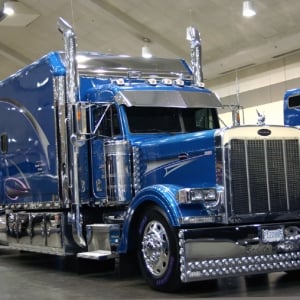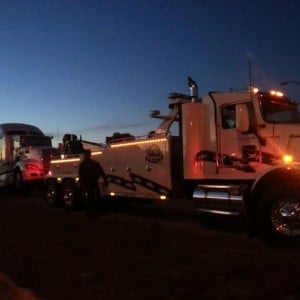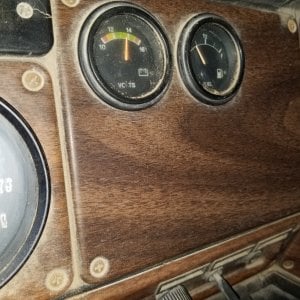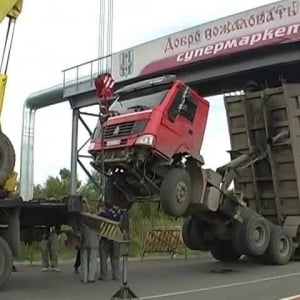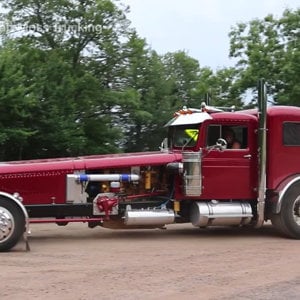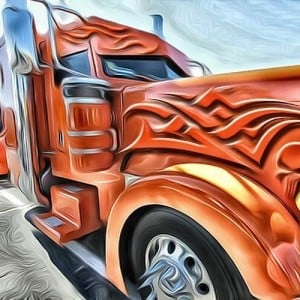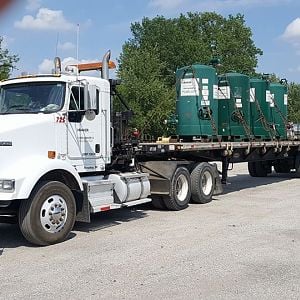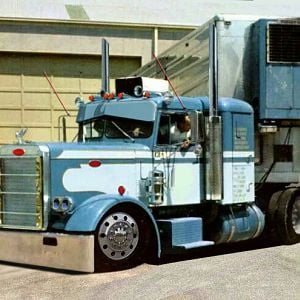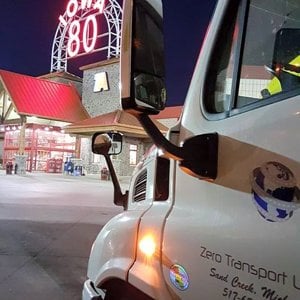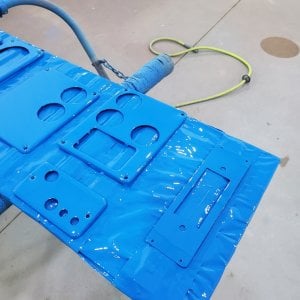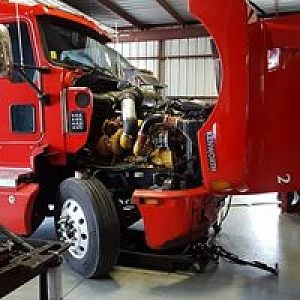Hey guys, I'm a retired jet mechanic/garbage truck driver/all around fixitifitsbroke that, while home on vacation, told my dad I would look at a truck he bought for his furniture business, I also own a non IDI ford f250 with the same basic engine which has caused me to drink on more than a few occasions. The truck in question is an International 4700 e444 that was bought used and has been sitting up since then with various problems. Unfortunately I don't know the actual year model of the truck but I believe it is between 1995 and 2000.
I've managed to work out all the kinks but one, appearantly the park brake will not disengage and this problem seems to have developed since it's been sitting up. One of the employees said that even though the brakes have never locked up before, when they were released, they seemed to drag for a while before "acting normal" and "didn''t have any power going up hill". I did a stall speed test on the torque converter and it stalls at about 1350 rpm. Oil pressure stays between 48 psi at idle and 55 psi at both stall and at 3000 rpm in Park or Neutral. The engine cold starts within 2 - 3 seconds with little or no valve rattle and no smoke was evident throughout the test, black or white. I mention these things because I think it eliminates or at least reduces the possibility that the lack of power is due to fuel injector(s), fuel line air leaks, or the injector pump. I found no evidence of loose clamps, leaking, broken, or torn turbo hoses or any other turbo related problems. The engine has no fuel or oil leaks (now), runs quiet, and the turbo appears to be functioning normally.
It has juice brakes and the shifter has "pb" annotated next to the park position. It looks like an allison automatic transmission and the park brake is integral to the drive shaft at the rear of the transmission. The brake "knob" looks like what you would expect for air brakes (might have even been yellow once) and passes through the firewall at the far left of the dash to a valve that is attached to the engine side of the firewall. Three hoses go from there to to a valve assembly at the rear of the transmission where three or four other hoses are also attached. Beyond this assembly is a canister that resembles the air canisters on most airbrake systems I've seen on tractor rear brakes and on trailer brakes. A pawl extends out of the opposite end of this canister and attaches to the actuator lever for the brake shoes on the rear of the transmission. The pawl does not move (extend out) as it should when the brake knob is pushed in. I initially thought that it might be frozen in place from lack of use and, with the knob pushed in, tried shifting the tranny from drive to reverse a few times to break it free. I had no luck at that so, with the engine running and wheels chocked, I cracked each line individually at both the firewall valve and the valve assembly at the transmission to check for fluid flow. With the brake knob pushed in I had flow at all fittings. Ultimately I removed the pin that holds the "pawl" and "actuator lever" together in order to release the brakes. Of course the truck has to be chocked all the time now and It can't leave the yard until this is fixed, but it does allow me to move it in and out of the shop in the interim. The only post I found in the forum was about brakes not engaging but mechman spoke of a "switch" that when bad would cause the brakes to not release. I hope that I have given you all the information you need to help me out. If not I would be glad to answer any questions as best as I can.
So now to my questions.
1. Is this "switch" the one with two wires that is screwed into the side of the actuator canister I spoke of?
2. Do you know the proper name for it so that I can get it at the parts house without sounding like a dope?
3. I don't have access to the internet at the shop and it's 50 miles each way. Assuming that this switch doesn't fix the problem, does anyone know of any other tips or troubleshooting measures I can use to narrow down the problem.
4. Assuming that with your help I'm able to get everything working, what is the proper procedure, if any, for adjusting this brake.
Thanks in advance for your help,
Threelies
I've managed to work out all the kinks but one, appearantly the park brake will not disengage and this problem seems to have developed since it's been sitting up. One of the employees said that even though the brakes have never locked up before, when they were released, they seemed to drag for a while before "acting normal" and "didn''t have any power going up hill". I did a stall speed test on the torque converter and it stalls at about 1350 rpm. Oil pressure stays between 48 psi at idle and 55 psi at both stall and at 3000 rpm in Park or Neutral. The engine cold starts within 2 - 3 seconds with little or no valve rattle and no smoke was evident throughout the test, black or white. I mention these things because I think it eliminates or at least reduces the possibility that the lack of power is due to fuel injector(s), fuel line air leaks, or the injector pump. I found no evidence of loose clamps, leaking, broken, or torn turbo hoses or any other turbo related problems. The engine has no fuel or oil leaks (now), runs quiet, and the turbo appears to be functioning normally.
It has juice brakes and the shifter has "pb" annotated next to the park position. It looks like an allison automatic transmission and the park brake is integral to the drive shaft at the rear of the transmission. The brake "knob" looks like what you would expect for air brakes (might have even been yellow once) and passes through the firewall at the far left of the dash to a valve that is attached to the engine side of the firewall. Three hoses go from there to to a valve assembly at the rear of the transmission where three or four other hoses are also attached. Beyond this assembly is a canister that resembles the air canisters on most airbrake systems I've seen on tractor rear brakes and on trailer brakes. A pawl extends out of the opposite end of this canister and attaches to the actuator lever for the brake shoes on the rear of the transmission. The pawl does not move (extend out) as it should when the brake knob is pushed in. I initially thought that it might be frozen in place from lack of use and, with the knob pushed in, tried shifting the tranny from drive to reverse a few times to break it free. I had no luck at that so, with the engine running and wheels chocked, I cracked each line individually at both the firewall valve and the valve assembly at the transmission to check for fluid flow. With the brake knob pushed in I had flow at all fittings. Ultimately I removed the pin that holds the "pawl" and "actuator lever" together in order to release the brakes. Of course the truck has to be chocked all the time now and It can't leave the yard until this is fixed, but it does allow me to move it in and out of the shop in the interim. The only post I found in the forum was about brakes not engaging but mechman spoke of a "switch" that when bad would cause the brakes to not release. I hope that I have given you all the information you need to help me out. If not I would be glad to answer any questions as best as I can.
So now to my questions.
1. Is this "switch" the one with two wires that is screwed into the side of the actuator canister I spoke of?
2. Do you know the proper name for it so that I can get it at the parts house without sounding like a dope?
3. I don't have access to the internet at the shop and it's 50 miles each way. Assuming that this switch doesn't fix the problem, does anyone know of any other tips or troubleshooting measures I can use to narrow down the problem.
4. Assuming that with your help I'm able to get everything working, what is the proper procedure, if any, for adjusting this brake.
Thanks in advance for your help,
Threelies

